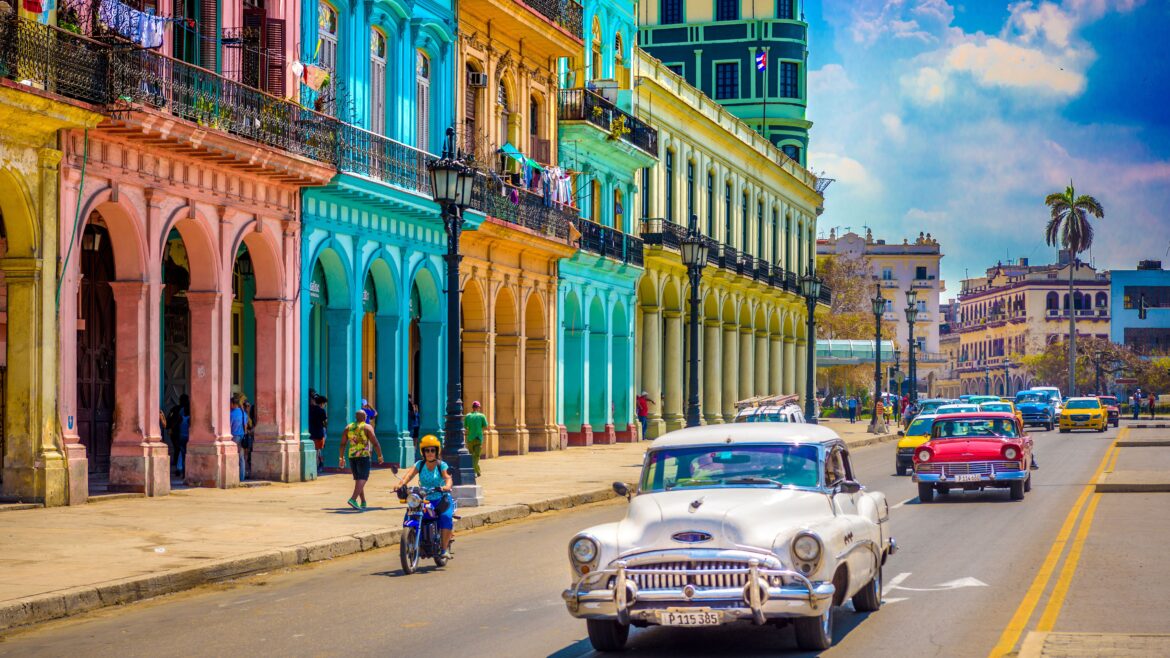Cuba, the largest island in the Caribbean, is a country like no other — a place where time seems to stand still, where colonial cities echo with music, and where every street corner tells a story of resilience, culture, and joy. For travelers seeking more than just beaches and sunshine, Cuba offers an unforgettable blend of history, natural beauty, and vibrant everyday life.
A Country Frozen in Time
One of the first things visitors notice about Cuba is its vintage charm. In Havana, the capital, colorful 1950s American cars roll past weathered colonial facades, while music spills out of cafes and balconies. Walking through Old Havana (La Habana Vieja) is like stepping into another era — cobbled streets, baroque churches, hidden courtyards, and beautifully restored plazas reflect centuries of Spanish colonial architecture.
Yet Havana is not just about nostalgia. The city pulses with creativity. From contemporary art galleries and jazz bars to open-air salsa dancing and rooftop restaurants, the Cuban capital is alive with culture and expression.
Sun, Sea, and Sand
Cuba is famous for its spectacular beaches, with over 5,000 kilometers (3,000 miles) of coastline. Varadero, perhaps the most well-known resort town, offers powdery white sand and turquoise water ideal for swimming and water sports. For a quieter experience, head to Cayo Coco, Cayo Largo, or Playa Ancón — stunning beaches with fewer crowds and crystal-clear waters perfect for diving and snorkeling.
The island’s coral reefs are among the healthiest in the Caribbean, and marine life thrives in its protected areas. Diving enthusiasts can explore shipwrecks, underwater caves, and colorful coral walls teeming with tropical fish.
History and Heritage
Cuba’s complex and compelling history is everywhere. In Santa Clara, the Che Guevara Mausoleum honors the revolutionary hero whose image remains a national icon. In Santiago de Cuba, the spirit of independence lives on in its Afro-Caribbean music, colonial fortresses, and revolutionary landmarks.
Trinidad, a UNESCO World Heritage Site, is a beautifully preserved colonial town where horse-drawn carts share the road with vintage cars. With its pastel-colored houses, cobbled streets, and mountain views, Trinidad feels like a living museum — yet it comes alive each night with rum, dancing, and music in the town’s open-air steps.
Nature Beyond the Cities
Cuba is not just beaches and cities. The island is home to dramatic landscapes, lush valleys, and hidden waterfalls. In Viñales, tobacco fields stretch between limestone hills, and visitors can explore caves, ride horses through the countryside, and learn about cigar production from local farmers.
Topes de Collantes, in the Escambray Mountains, offers excellent hiking through tropical forests rich in orchids, ferns, and endemic birds. Nature lovers will also enjoy Cuba’s biosphere reserves and national parks, such as Ciénaga de Zapata, where flamingos and crocodiles inhabit vast wetlands.
Culture, Music, and People
Cuban culture is deeply rooted in music and rhythm. From son cubano and rumba to salsa, music is a daily part of life, and it’s common to hear live bands in even the smallest towns. Dance is equally essential, and many visitors find themselves learning the steps from friendly locals.
The warmth and hospitality of the Cuban people are among the country’s greatest treasures. Whether you’re staying in a government hotel or a casa particular (private guesthouse), you’ll often be welcomed like family — with a smile, a home-cooked meal, and a strong cup of coffee.
Practical Information
Cuba is a safe and welcoming country, but traveling here requires a bit of preparation. Tourists need a visa (tourist card) to enter. It’s also advisable to bring cash in euros or Canadian dollars, as U.S. dollars are subject to additional exchange fees, and ATMs are not always reliable.
Internet access can be limited and is usually available through prepaid cards used at Wi-Fi hotspots. This occasional digital disconnection can be a refreshing reminder to fully engage with your surroundings.
Spanish is the official language, and while English is spoken in some tourist areas, learning a few basic Spanish phrases can go a long way.
Cuba is a land of contrasts and surprises — a place where beauty meets hardship, joy thrives amid struggle, and every sunset is accompanied by the distant rhythm of a drum. It’s not a place to rush through but one to savor slowly, whether you’re sipping a mojito by the sea, dancing with strangers in a colonial square, or simply watching life unfold from a shaded veranda.
In Cuba, the past is present, and the present is full of color, rhythm, and life. For travelers with an open heart and a spirit of adventure, Cuba offers an experience unlike any other.


